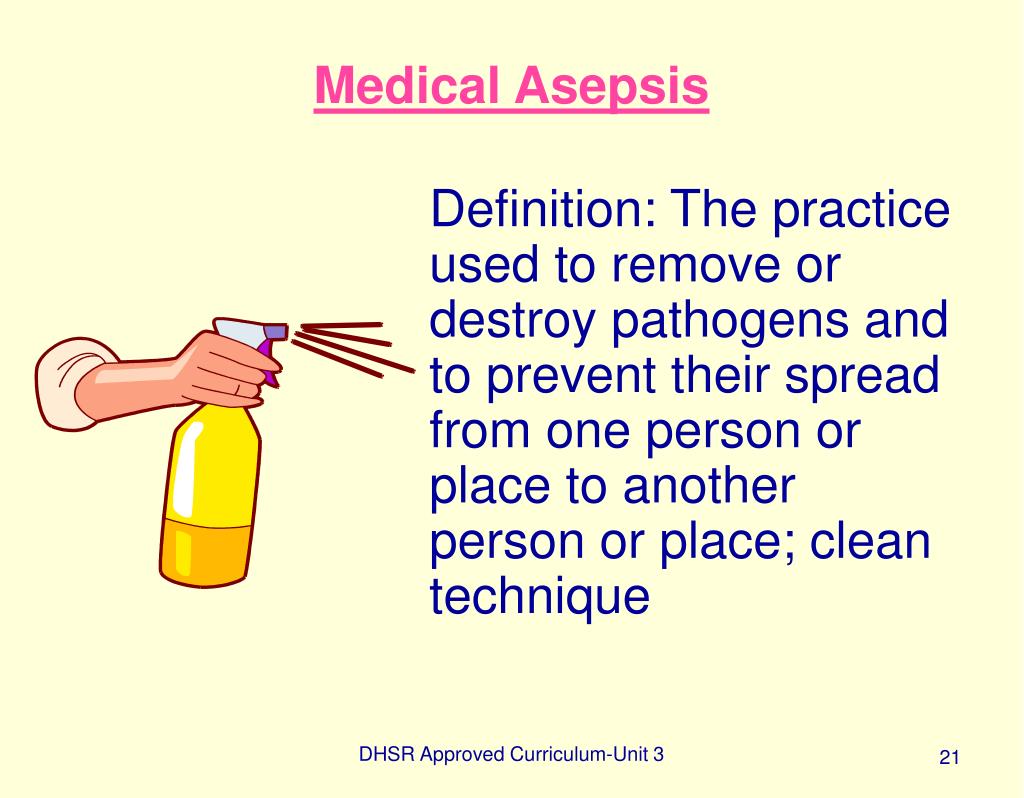
Transmission based precautions are special measures that are put in place to prevent the spread of infection.Vector-borne transmission is defined as the transmission of a pathogen from an animal or insect to a human being.Contact precautions are indicated in the presence of a pathogen that is transmitted via contact transmission. Indirect contact transmission is sometimes referred to as vehicle-borne transmission. Contact transmission is defined as the mode or means with which a microorganism is moved and transmitted via direct or indirect contact with the infected person or an object that has been contaminated with the pathogen, respectively.Airborne precautions are indicated in the presence of a pathogen that is transmitted via the airborne mode of transmission. These infections are found in droplets and dust in the air. Airborne transmission is defined as the mode or means with which a microorganism is moved and transmitted via air and inhaled into the respiratory tract by the susceptible host.The chain of infection includes the infectious microorganism, the reservoir or location where the pathogen lives, the port of exit from the reservoir, the mode of transmission from the reservoir, the portal of entry into the person, or host.Read more about cleaning, disinfection, and sterilization. Some of the commonly used terms and terminology associated with infection control include those relating to the chain of infection, the modes of transmission of infectious microorganisms, asepsis, types of infection, and personal protective equipment.
.jpg)
Evaluate whether the aseptic technique is performed correctly.Evaluate infection control precautions implemented by staff members.Utilize appropriate precautions for immunocompromised clients.Educate client and staff regarding infection control measures.Follow correct policy and procedures when reporting a client with a communicable disease.Use an appropriate technique to set up a sterile field/maintain asepsis (e.g., gloves, mask, sterile supplies).Apply principles of infection control (e.g., hand hygiene, surgical asepsis, isolation, sterile technique, universal/standard precautions).Understand communicable diseases and the modes of organism transmission (e.g., airborne, droplet, contact).Assess client care area for sources of infection.Droplet precaution is a technique where appropriate personal protective equipment (PPE) is worn so as not to carry the organism via droplet from exposed client to others.In this section of the NCLEX-RN examination, you will be expected to demonstrate your knowledge and skills standard precautions, transmission-based, and surgical asepsis in order to: A client that has immune system disorders, in which the client might not be able to fight off an organism, would be kept in an environment to minimize exposure to the organism.


Strict reverse isolation is an isolation technique where the client is protected from the nurse, other health care providers, and visitors. Medical asepsis procedures include performing hand hygiene and wearing gloves. Medical asepsis, or clean technique, involves procedures and practices that reduce the number and transfer of pathogens.

An object is considered sterile when all microorganisms, including pathogens and spores, have been destroyed. Procedures that involve the insertion of a urinary catheter, sterile dressing changes, or preparing an injectable medication are examples of surgical asepsis techniques. Surgical asepsis techniques, used regularly in the operating room, labor and delivery areas, and certain diagnostic testing areas, are also used by the nurse at the client's bedside. Surgical asepsis technique Surgical asepsis technique is the technique followed to insert an indwelling urinary catheter.


 0 kommentar(er)
0 kommentar(er)
